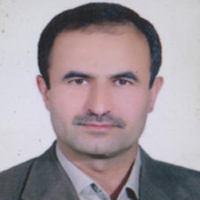Spatio-Temporal Fusion of Landsat and MODIS Land Surface Temperature Data Using FSDAF Algorithm
Land Surface Temperature (LST) is an important parameter in weather and climate systems. Satellite remote sensing is a unique way to estimate this important parameter. However, satellite products have either low spatial resolution or low temporal resolution that limits their potential use in various studies. In recent years, the use of Spatio-temporal fusion techniques to produce high resolution simultaneous spatial and temporal images has been extensively investigated. In this study, a Flexible Spatio-temporal Data Fusion (FSDAF) was used to produce Landsat-like LST images with Landsat spatial resolution and MODIS temporal resolution. The quantitative and qualitative validation of the images was performed by comparing them with the Actual Landsat LST images. The results showed that the FSDAF algorithm has high accuracy in estimating daily LST data both qualitatively and quantitatively. The RMSE and MAE parameters of the images produced compared to the actual Landsat images were 1.18 to 1.71 and 0.88 to 1.29°C, respectively. The correlation coefficient above 0.87 and bias between -0.6 to 1.45°C also confirms the high accuracy of the algorithm in estimating Landsat-like land surface temperature on a daily time scale.
-
Spatial Analysis of Observed Precipitation in Fars Province and its Projection Using CanESM5 Climate Model Output
Ali Asadi, Seyed Hossein Sanaei Nejad *
Nivar, Spring and Summer 2025 -
Performace Evaluation of PERSIAN PDIR-Now and PERSIANN CCS Products for Precipitation leading to the Most Severe Floods in Iran between 2017 and 2019
Seyyed Hossein Sanaei-Nejad *, Khosro Salari
Journal of Geography and Environmental Hazards,



